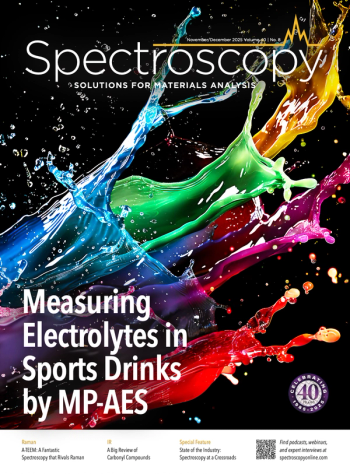
New Probe's Fluorescent Deactivation Behaviors and Sensing Mechanism Revealed by TD-DFT Study
Two researchers have investigated the fluorescent deactivation behaviors and sensing mechanism of a novel double target fluorescent probe, shedding light on its characteristics and recognition capabilities for aluminum and magnesium ions.
Scientists from Nanjing Forestry University in China have conducted an in-depth investigation into the fluorescent behavior and sensing mechanism of a novel double target fluorescent probe. The study, published in Spectrochimica Acta Part A: Molecular and Biomolecular Spectroscopy, employed density functional theory (DFT) and time-dependent DFT (TD-DFT) methods, along with the integral equation formula polarized continuum model (IEFPCM), to shed light on the probe's characteristics and recognition capabilities (1).
DFT provides a practical and efficient approach to calculate the energies and properties of systems based on the density of electrons. TD-DFT extends DFT to include the treatment of excited states, allowing for the investigation of optical and electronic properties. It considers the time evolution of the electron density under the influence of external electromagnetic fields. The IEFPCM is a solvation model that incorporates the effects of the surrounding environment, such as solvents or charges, on the electronic structure and properties of molecules. It treats the solvent as a continuum with a polarizable response. Together, DFT, TD-DFT, and IEFPCM provide powerful tools for understanding and predicting the electronic and optical behavior of molecules and materials, and their combined use allows for accurate calculations of properties in solution or under the influence of external fields.
The probe under scrutiny is called N'-((1-hydroxynaphthalen-2-yl)methylene)isoquinoline-3-carbohydrazide (NHMI), and it exhibits an excited state intramolecular proton transfer (ESIPT) process in a stepwise manner. Initially, the proton H5 of the enol structure (E1) undergoes a single proton-transfer (SPT2) by moving from O4 to N6, forming a stable double proton-transfer (DPT) structure. Subsequently, the transformation from DPT to its isomer (DPT1) initiates a twisted intramolecular charge transfer (TICT) process. Within this process, two non-emissive TICT states (TICT1 and TICT2) are formed, with TICT2 responsible for the observed fluorescence quenching.
However, when aluminum (Al3+) or magnesium (Mg2+) ions are introduced, the TICT process is inhibited due to the coordination interaction between NHMI and these metal ions. Consequently, a strong fluorescent signal is generated. The addition of Al3+ or Mg2+ effectively prevents the probe from entering the TICT state, thus preserving its fluorescence.
The researchers also identified the twisted C-N single bond of the acylhydrazone part in NHMI as the key factor triggering the TICT state. The insights gained from this study offer valuable information for the development of new probes with enhanced fluorescent properties, highlighting the potential for future research in this field.
The utilization of TD-DFT and DFT methods, combined with the IEFPCM model, has provided a deeper understanding of the fluorescent deactivation behaviors and sensing mechanisms of the NHMI probe. This knowledge serves as a foundation for the design and development of innovative probes that can effectively detect and respond to specific target ions.
Reference
(1) Sun, G.; Fang, H. Fluorescent deactivation behaviors based on ESIPT and TICT of novel double target fluorescent probe and its sensing mechanism for Al3+/Mg2+: A TD-DFT study. Spectrochimica Acta Part A: Mol. Biomol. Spectrosc. 2023, 297, 122718. DOI:
Newsletter
Get essential updates on the latest spectroscopy technologies, regulatory standards, and best practices—subscribe today to Spectroscopy.


